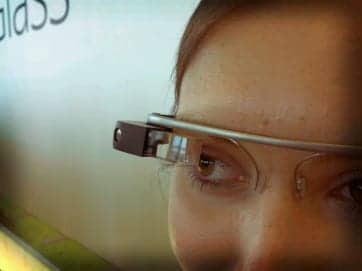Journalist Lisa A. Goldstein, who has a cochlear implant, was invited to be one of the first people to utilize Google Glass, but found out that the cutting edge communications device was not an ideal fit for those with hearing loss.
Google Glass is an innovative pair of communication glasses that can show and perform real time Internet searches, display maps, as well as record and play videos in front of the user’s eyes. 
In an article written for Mashable, a popular tech blog, Goldstein shares her odyssey of trying to find out if Google Glass will work with her cochlear implant and see what other features would help to enhance her communication skills.
Profoundly deaf since birth, Goldstein wears a cochlear implant with a corresponding digital hearing aid. She speaks and reads lips, but cannot understand speech without seeing the speaker’s face or reading captions.
She writes, “Instant captioning would make my life easier in many respects — for that person who mumbles or has a thick foreign accent, when I miss announcements or other audible information, or when I’m at a venue that doesn’t have captions. I was excited thinking about the possibilities, both professionally and personally.”
Goldstein later discovered that her deaf accent may also not be understood when speaking commands to Google Glass, and that there was no alternate way to input commands through a smart phone or other external device.
Since Google Glass also gives verbal information to the wearer, Goldstein found that there was no captioning on the screen in front of her to tell her what it was saying. Though the device has a bone conduction speaker, her deafness was more profound, so there needed to be some type of integration with her cochlear implant.
Goldstein concludes, “In other words, Glass isn’t accessible for people who can’t understand speech.”
SOURCE: Mashable





